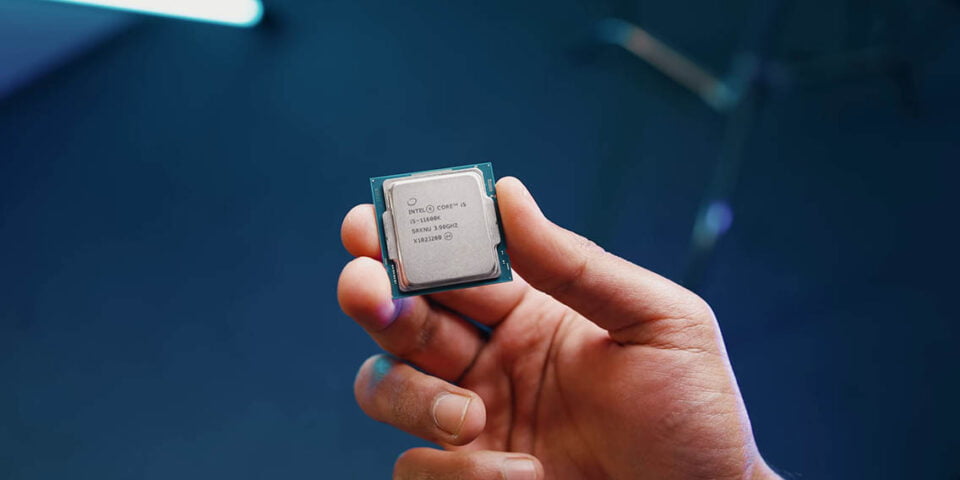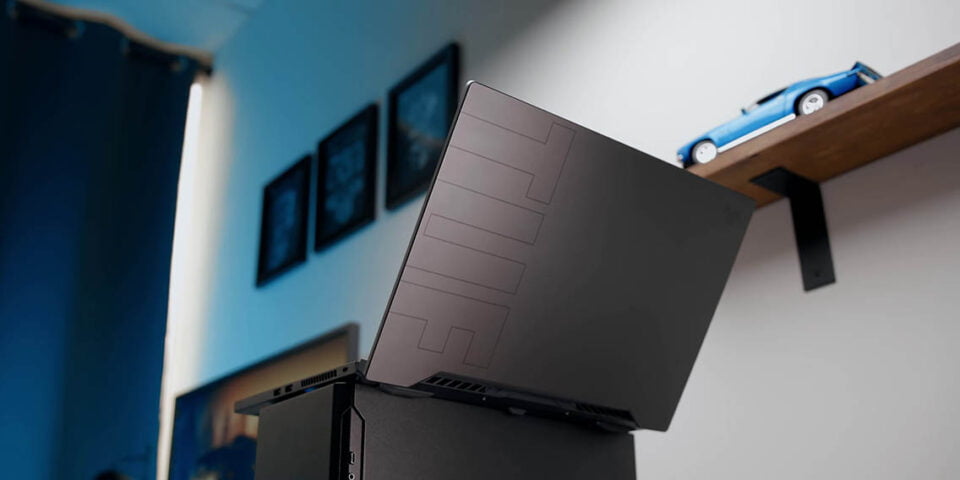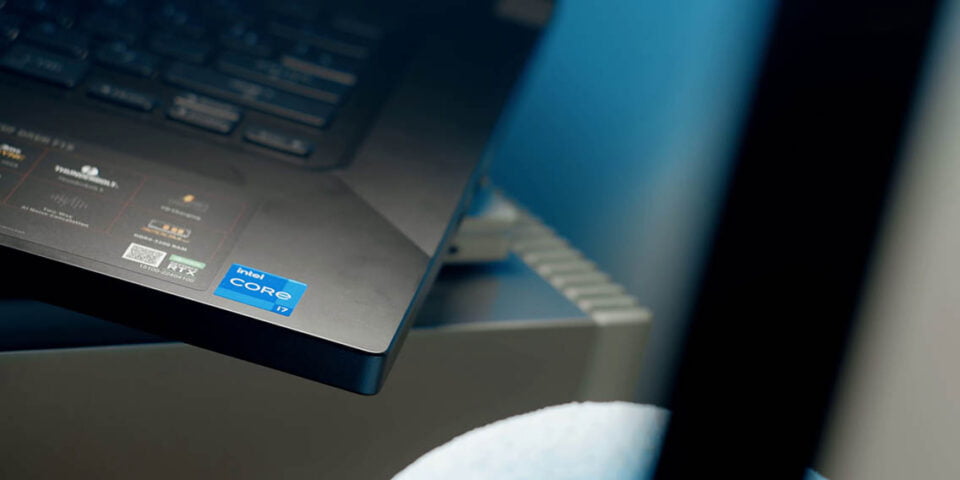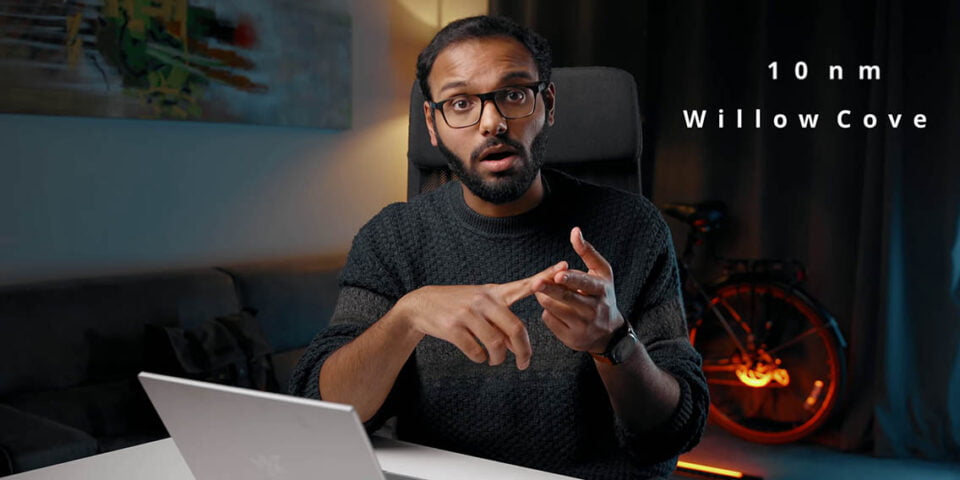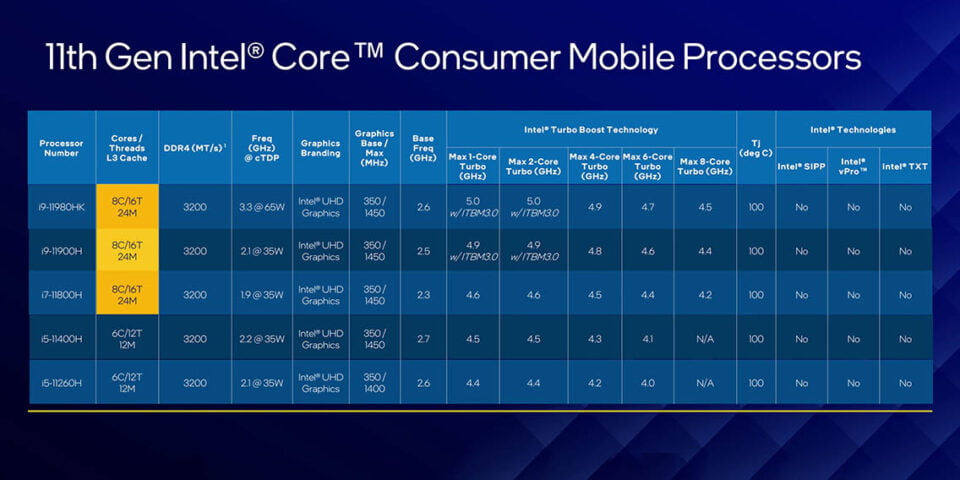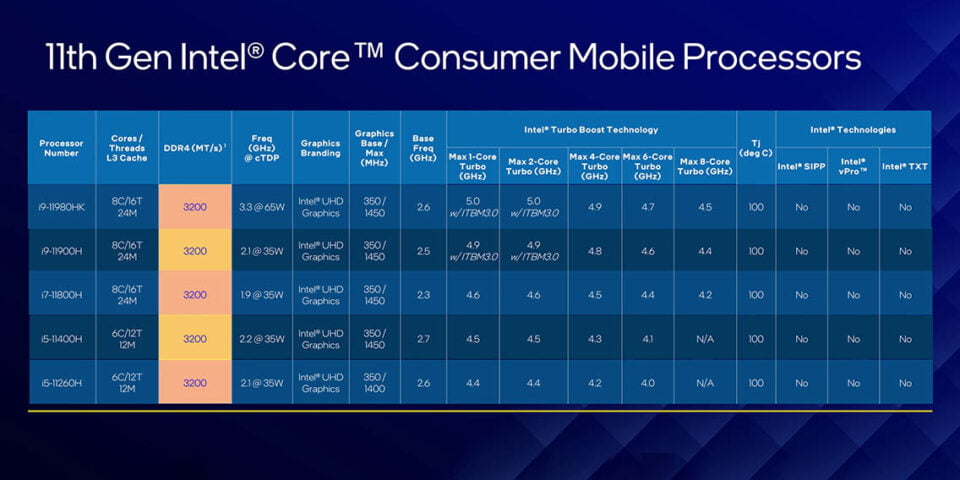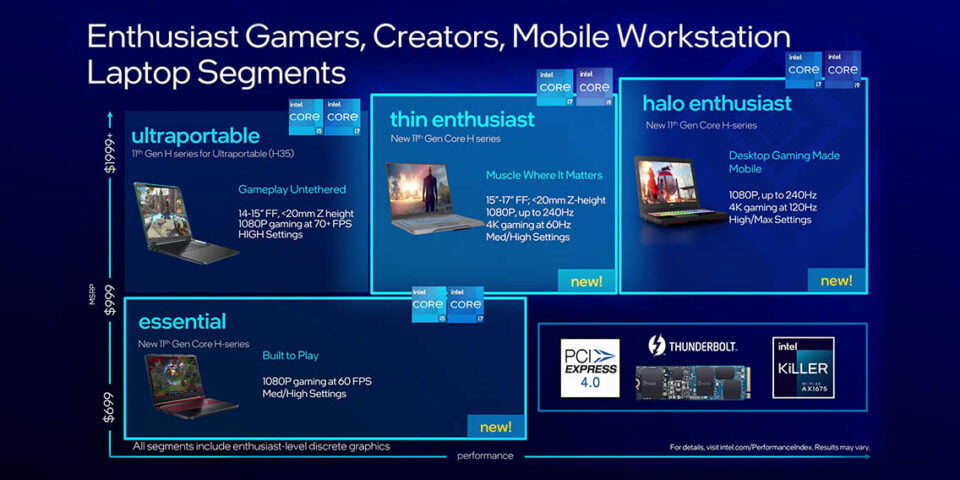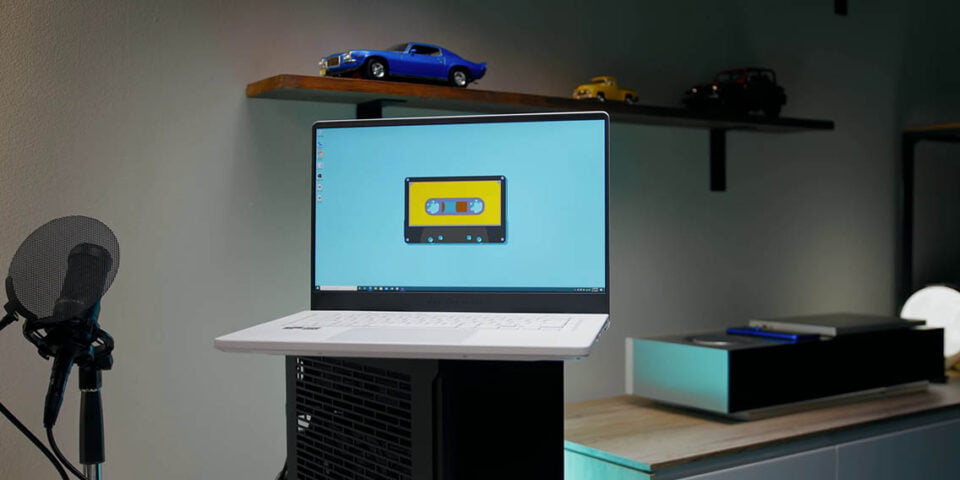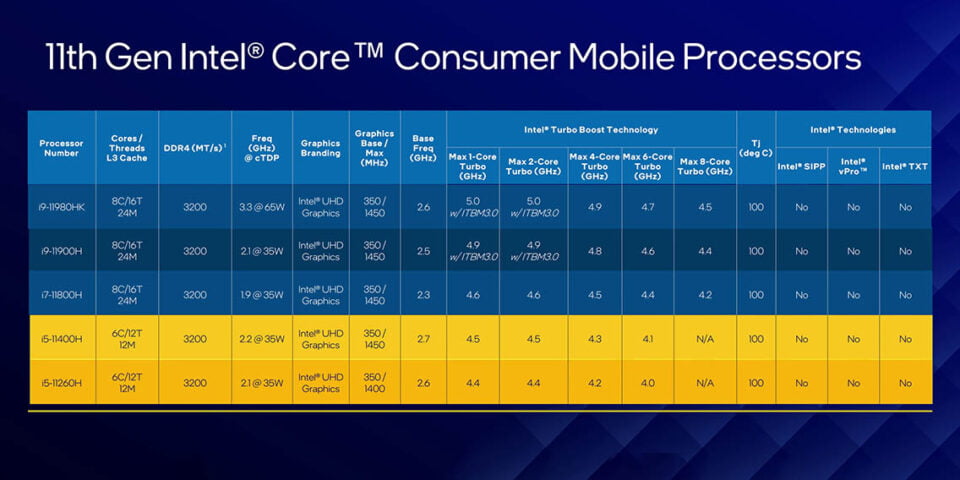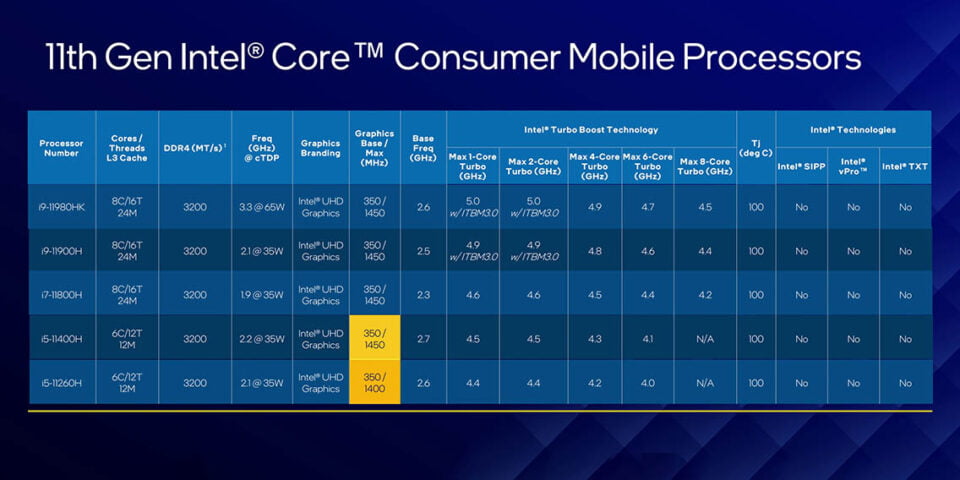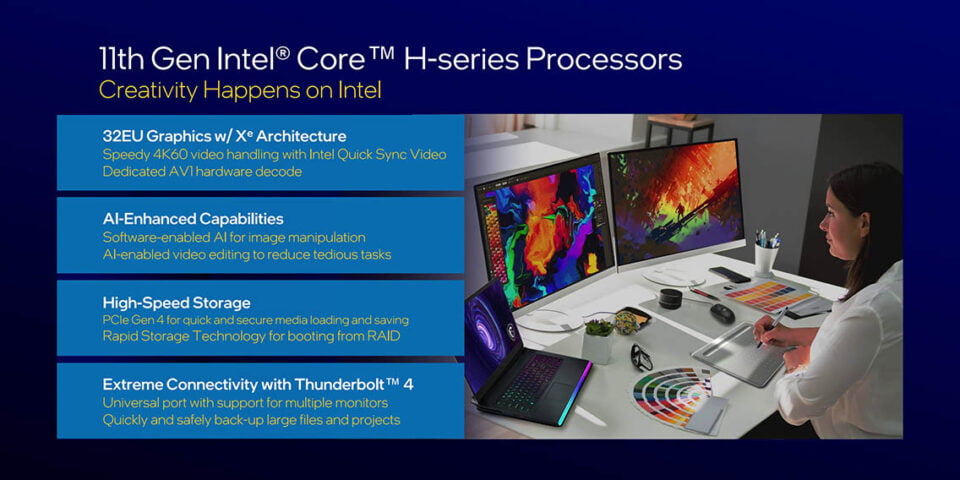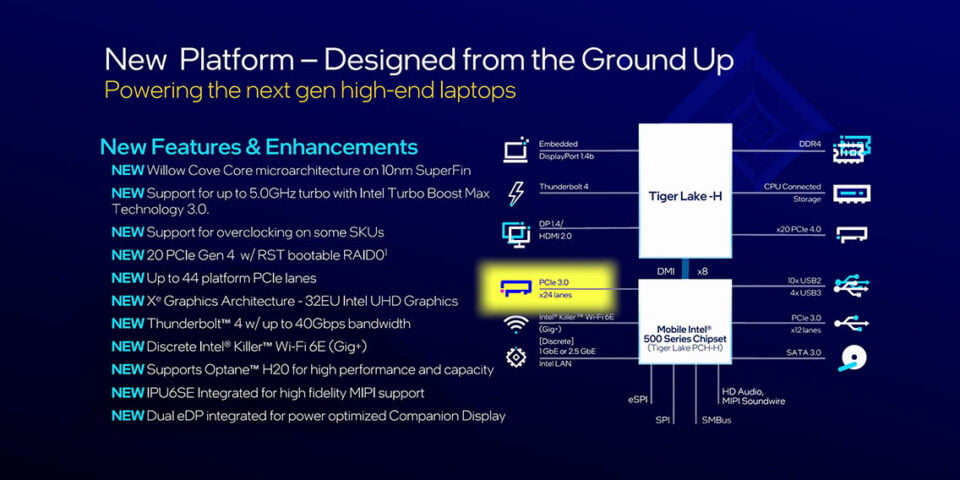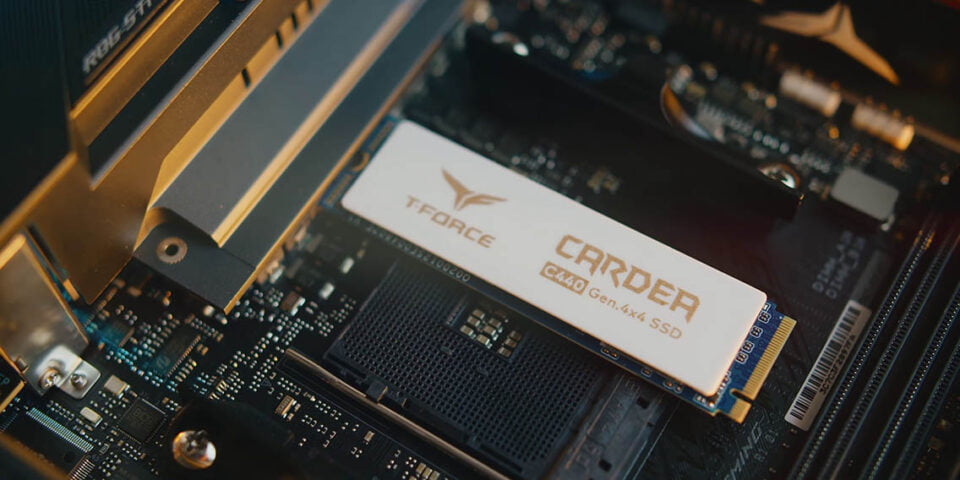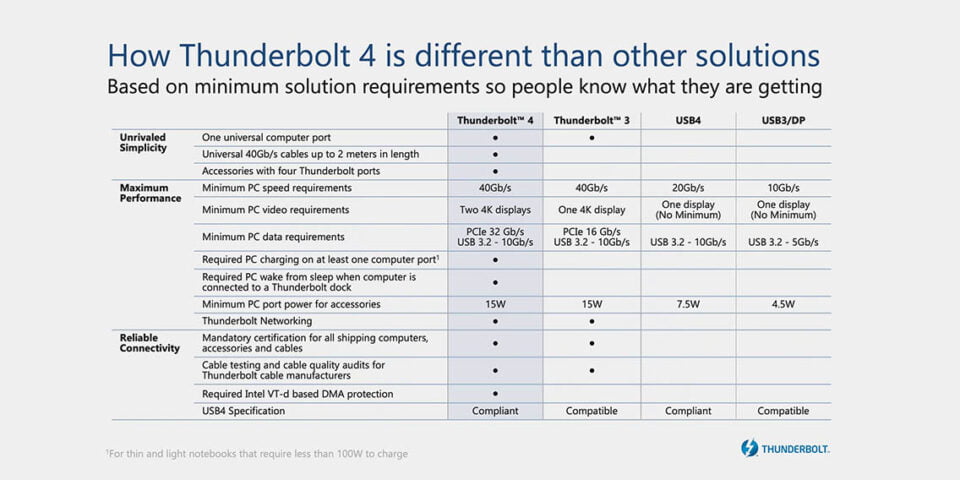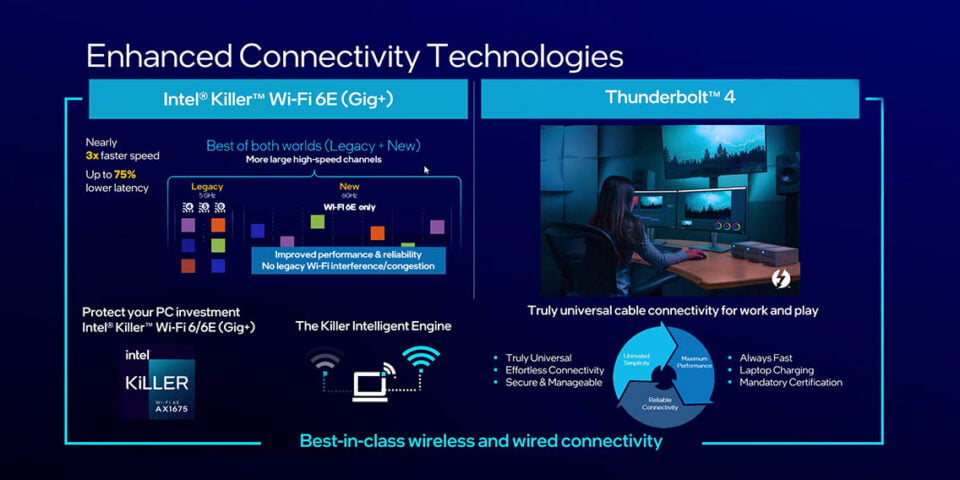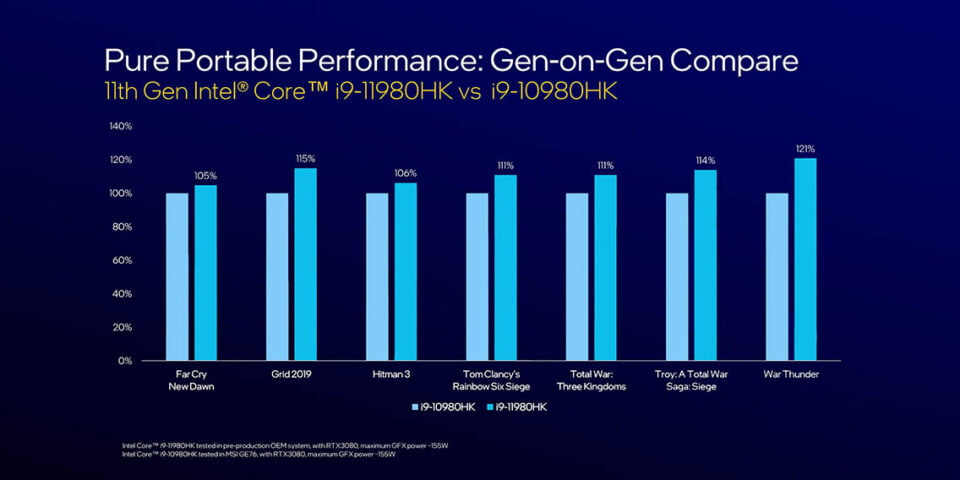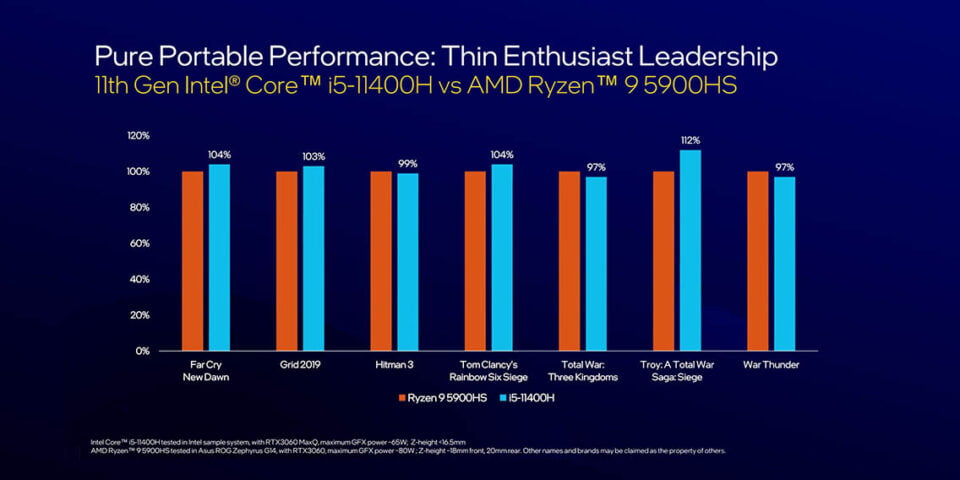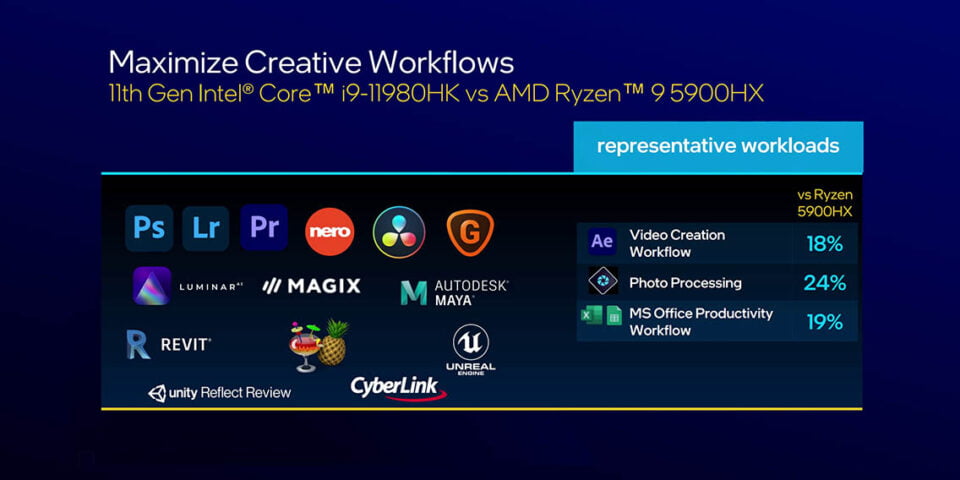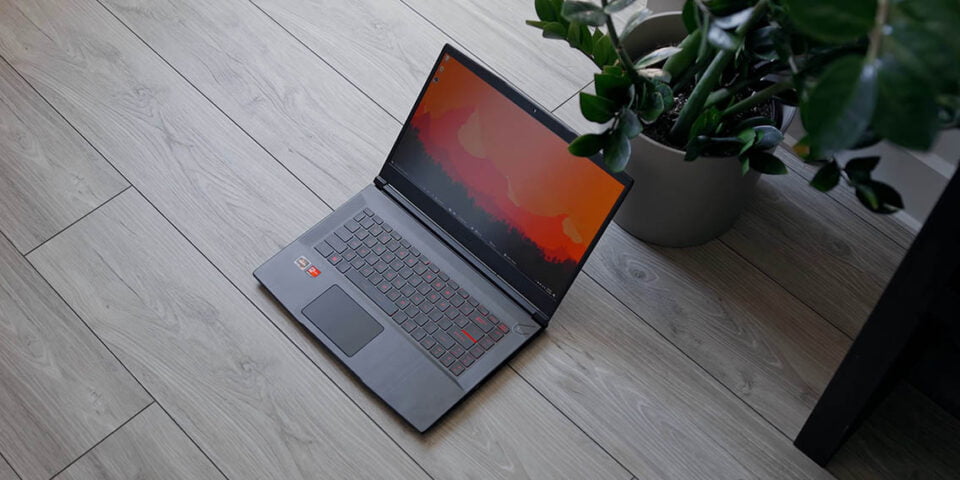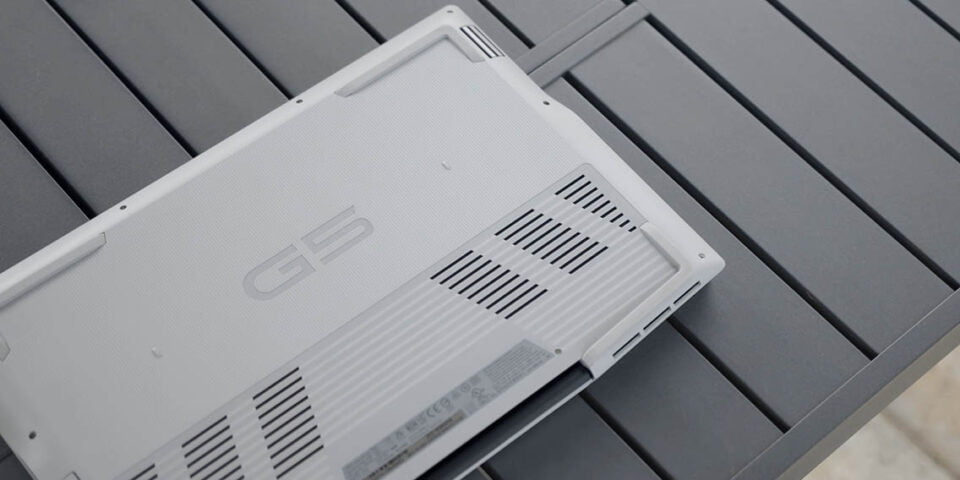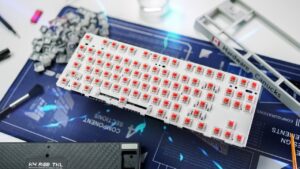The END of Ryzen Laptop Domination Intel 11th Gen H-series is HERE!

Share:
Table of contents
Competition is good for everyone because that way we can avoid monopoly on performance, have better choices, and hopefully lower prices. While AMD Ryzen’s domination is great to see the last thing that anybody wants is for Intel to keep losing over and over and over again. Hopefully that slide is about to stop – maybe – and that’s what this article is about. We all know that Intel is having a lot of trouble competing with Ryzen CPUs for a while now. If you look on the desktop side, they tried hitting back with Rocket Lake, which was a weird mashup of an old manufacturing process with a new architecture, and I think that ended up landing with a solid ‘meh’, but when it comes to gaming laptops the situation has actually been a lot, lot worse.
Current Situation
Intel’s 10th gen Comet Lake processors have had to compete with the unbeatable Ryzen Mobile 4000 and 5000 series from AMD for a while, and they didn’t have a replacement until now. The only thing that is keeping AMD from complete domination was the fact that they couldn’t produce enough CPUs, so finding a Ryzen based laptop right now wasn’t easy and it still isn’t. That shortage sort of gives Intel an opportunity right now if they can get an architecture that beats the Ryzen 5000 series before those chips become widely available it will be a big win.
That is where the new Tiger Lake series, which is codenamed H45, comes into play. Now this isn’t the super efficient Tiger Lake you know from the ultrabooks or the H35 model that performed pretty well in the TUF Dash F15. This is like a mutation of those that has been scaled up to 8 cores and 16 threads along with some seriously high clock speeds. And you know what? While I have been pretty critical of Intel in the past, this is the only time in a long time that I’m actually excited to see what Intel have for in store consumers with their new 11th gen lineup.
So what exactly is Tiger Lake? Well, you can find out my explained article right over here, but let’s just say that there are a lot of new elements. This isn’t the refreshed 14nm+++++ process, it actually uses a new 10nm SuperFin process, a new Willow Cove architecture, and new Xe graphics, a completely top to bottom new approach. And you know what Intel delivered because after testing a few Tiger Lake notebooks it turns out that their lightly threaded performance was excellent, IGP gaming performance was hugely improved, and power efficiency has gotten a lot better. Then came this year’s CES that introduced Tiger Lake H35 and a little peak at something else lot more important for gaming laptops. You see back then Intel teased 3 big numbers that caught everyone’s attention: 5GHz, 8 cores, and 20 PCIe Gen4 lanes. And that’s exactly what they have delivered now.
Intel 11th Gen H-series Lineup
Now these newest 11th gen Core H-series processors will come in both 6-core/12-thread and 8-core/16-thread variants. They are all 45W parts, but the flagship HK model can be configured up to 65W. Meanwhile the H35 CPUs will stick around for lower end devices and yes Intel is still using their alphabet soup naming scheme, which I still think is just ridiculous. I think they really need to get it together and refine it. Now the star of the show is obviously the i9-11980HK model, which is an 8-core/16-thread chip that can boost up to 5.0GHz on 2 cores and can hit 4.5Ghz on all 8 cores. That is extremely impressive, in fact on paper it’s almost equal to the Rocket Lake i7-11700K desktop CPU that has a 125W+ TDP. This HK model is also fully unlocked so it can be overclocked using the Extreme Tuning Utility (XTU) for full manual control or with the Speed Optimizer feature for an easy automatic overclock.
Below the i9-11980HK are the processors you will probably end up seeing in most gaming laptops, starting with the i9-11900H and the i7-11800H. Both share the same 8-core/16-thread layout, but the i7-11800H looks to be a pretty nice sweet spot. It’s only 7% to 9% slower than the HK, so don’t think of it as a lower end CPU.
What is identical across all three 8 core Tiger Lake CPU’s is the 24MB of L3 cache, which is even more than what’s available in desktop Rocket Lake CPUs. Technically this should allow for much higher performance in most applications. One interesting thing you will see here is this “Frequency at cTDP” column where Intel is also trying to highlight 35W base frequency of the non-HK models. Also the native memory support has been bumped up from DDR4-2933 to DDR4-3200 on all of these new these Tiger Lake Chips, which is a nice bump.
All those chips can have their wattage configured downwards so they can fit into the thin enthusiast category that is starting to be more widely available and also a lot popular these days. It will allow them to be used in sub-20mm thick chassis while also being paired up with higher end GPUs. A great example of this is the ROG Zephyrus G15 I looked at, and if we can get laptops like that at an affordable price range that is going to be really exciting.
Moving on to the two Core i5 models, they are both 6-core/12-thread models with very good clock speeds across the board, but Intel took a chainsaw to L3 cache and cut it in half. That 12MB of L3 cache is equal to some of the quad-core Tiger Lake chips, so Intel are clearly trying to distance these 2 chips from the higher-end and pricier 8-core models. Core clock speeds aside, the only other difference between these two models is that the 11260H has a 50MHz lower maximum integrated GPU frequency, but I don’t think anybody would care about that.
Integrated Graphics
While we are on the topic of the IGP, despite featuring the “UHD Graphics” name, these 5 processors do have the same Xe-LP graphics architecture as the rest of the Tiger Lake lineup, but cut down to only 32 EUs. That is a large decrease compared to the 48/80/96 EUs variants on the quad-core chips. This is a little disappointing since a 6 or 8-core/96 EU processor would be awesome in an affordable thin-and-light without a discrete GPU, but I understand the decision. First because an 8-core die with 96 EU IGP section would require a HUGE die size, and second because based on their conversations with their OEM partners Intel knows that these higher-end Tiger Lake processors will all be paired with higher performance discrete GPUs anyway.
The Platform
Where things start to get really interesting is with the platform since it’s completely new. Intel has moved to a complete top to bottom PCIe Gen4 architecture with 8 lanes dedicated to the discrete GPU. That is pretty big news since even AMD’s latest Ryzen Mobile 5000 series is limited to PCIe Gen3 lanes to save on power, even for storage solutions. Intel is also supporting Resizable Bar at launch so this features combo points towards Tiger Lake being super competitive for gaming. Now these processors have 20 PCIe Gen4 lanes coming from the CPU, so while 8 goes to graphics the other 12 can be used for high-speed storage in RAID if necessary. I think that will actually open up some interesting options, imagine a PCIe Gen4 RAID array on a gaming laptop. For example, it could benefit Microsoft Direct Storage, which is an upcoming Windows API that promises lower CPU usage during the tens of thousands of I/O operations or requests that modern games can send to a fast NVMe SSD.
By the way, there is also an additional 24 PCIe Gen3 lanes coming from the PCH for a grand total of 44 platform PCIe lanes. This opens up the possibility for a lot of connectivity and storage options, but it’s ultimately up to laptop manufacturers to take advantage of them. Even when using a single PCIe SSD Intel is claiming up to 80% higher bandwidth and 75% faster access times in real-life workloads compared to their previous high-end Comet Lake mobile platform, which makes sense since that platform only supported PCIe Gen3 SSDs. Intel’s other pride and joy is native support for Thunderbolt 4, which debuted on Tiger Lake. Now obviously the 40Gbps speed is a huge selling point because it can support multiple high resolution screens. Also, supposedly every laptop with a Thunderbolt 4 port will be able to be charged from that port, but I hope that won’t lead to losing the only port that has high-speed access like we are starting to see with some laptops these days.
Tiger Lake H-series laptops will also have a native support for Killer WiFi 6E, which is cool since it opens up the 6GHz band for WiFi. This new spectrum has 4 times the amount of space available for routers and other devices which means a lot more bandwidth and less interference. No more having to deal with a bunch of congestion if you’re on the 5GHz WiFi band, at least until all of your neighbors switch over to 6E too, which I don’t think is going to happen anytime soon.
Performance
So what do all these improvements lead to? Well according to Intel’s numbers, some very impressive gaming performance gains compared to their previous generation and also AMD’s best Ryzen 5000 Mobile chips. The fact that the new i9-11980HK can beat the previous i9-10980HK is no surprise, but how much their new flagship i9 trounces the Ryzen 9 5900HX is quite impressive, especially given that the i9’s companion RTX 3080 Mobile GPU is running a 10W lower TGP. AMD does have an even higher-end Ryzen 9 5980HX but it’s only advantage is a 200MHz Max Boost Clock, so that wouldn’t really change these results. Intel were perhaps most enthusiastic to show that their new Core i5-11400H could trade blows with the higher-end Ryzen 9 5900HS, despite having 2 less cores and an RTX 3060 GPU running at 15W less. It’s not a flawless victory, but it definitely shows that 11400H will be a much better gaming CPU than the mainstream-oriented Ryzen 5 5600H.
In terms of content creation and productivity, well this is somewhere Intel avoids talking about specific benchmark numbers and instead focuses on averages across a bunch of apps. Either way, they are claiming some more big increases over their own 10th gen chips. And you know what? I believe them since these percentages are about what I saw with Tiger Lake ultrabooks. Now when you put them against AMD though, I’m going to have to see myself to believe any of these numbers. However, even if they are half true it’s great news for competition.
Conclusion
In the end these numbers don’t mean anything since Intel’s success or failure is going to be determined by a few points. First, the price of these new laptops. Ryzen Mobile is ultra-competitive these days, and it is finally being hooked up to higher end GPUs, so they can’t continue selling Intel-based systems for a premium. If Intel actually tries that they are definitely going to fail. Also great specs aren’t worth anything if a laptop’s design is fighting with you. I mean look at what happened at something like the MSI Bravo 15 and the Dell G5 15 SE. They were amazing on paper, but neither was a device that I actually want to use. Intel needs to work with their partners to avoid slip-ups like those. Performance is another big one, and it looks like Tiger Lake’s architecture and the 11th gen processors are a big step in the right direction. However, like I have been saying for a while now, because of how much variation there is in laptop CPU and GPU wattages you can’t just judge an entire CPU lineup based on its specs.
Finally, there is another big one: Availability. You see if Intel can actually work on hitting those points that I just mentioned earlier, and also get a ton of chips right before the usual surge of Ryzen gaming laptops during the summer well I think AMD might be in a spot of trouble. Either way, the next few months is really going to be interesting for anyone looking for a gaming laptop. As I mentioned in the very beginning of this article, competition is good for everyone so I’m not trying to pick sides between Intel or AMD, I’m just really excited to see what Team Blue can bring to the table. The back and forth is a win for customers.


